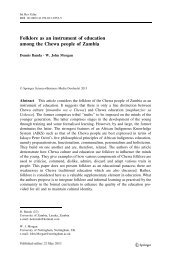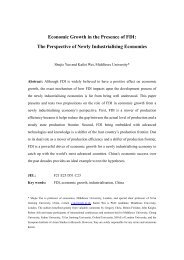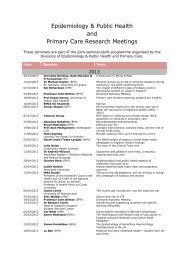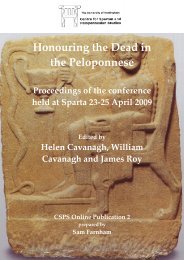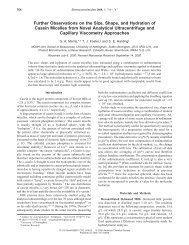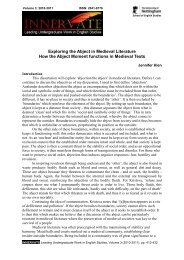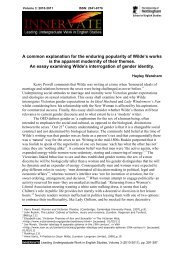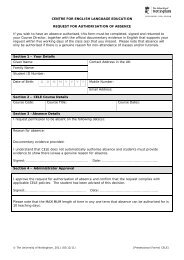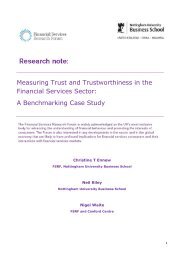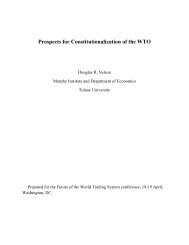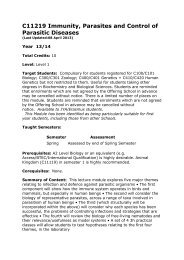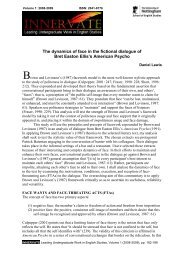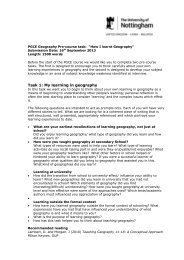Grouted Macadam: Material Characterisation for Pavement Design
Grouted Macadam: Material Characterisation for Pavement Design
Grouted Macadam: Material Characterisation for Pavement Design
Create successful ePaper yourself
Turn your PDF publications into a flip-book with our unique Google optimized e-Paper software.
Chapter 2 Review of “Traditional” Road <strong>Pavement</strong> Types and <strong>Design</strong><br />
permanent de<strong>for</strong>mation (by the development of rutting at the surface of the<br />
pavement) and the cracking of the bituminous layers. To avoid the appearance of<br />
such distresses, the design criteria used in the analytical methods are the maximum<br />
tensile strain in the underside of the asphalt (εt or εr) and the maximum compressive<br />
subgrade strain (εz), as was illustrated in Figure 2.14.<br />
The development of a rut is the result of the accumulation of permanent de<strong>for</strong>mation<br />
throughout the pavement structure. Within the asphalt layers this can be minimised<br />
by an adequate mixture design and by a good compaction of all layers. According to<br />
Brown and Brunton (1985) if the vertical strain in the subgrade is kept below a<br />
certain level, experience has shown that excessive rutting will not occur, unless poor<br />
mix design or inadequate compaction are involved.<br />
Cracking of the asphalt layer arises from repeated tensile strain, the maximum of<br />
which occurs at the bottom of the layer, as shown in Figure 2.14. The crack, once<br />
initiated, propagates upwards causing gradual weakening of the structure (Brown and<br />
Brunton, 1985). More recently, a different concept has been studied and discussed<br />
among researchers, where a crack may initiate at the surface and propagate<br />
downwards, especially in pavements with thick bound layers (Freitas et al., 2003).<br />
The design procedure would consist of proportioning the pavement structure so that,<br />
<strong>for</strong> the chosen materials, it would not present values of strain higher than the critical<br />
levels stipulated <strong>for</strong> the design life. The analytical methods have been used with<br />
computer programs that determine the stresses and strains in the various layers,<br />
according to the mechanical properties of the materials used, i.e. stiffness modulus<br />
and Poisson’s ratio. Different response models have been used, e.g., semi-infinite<br />
half-space † and layered analytical models * , based on linear elastic theory and<br />
isotropic layers (AMADEUS, 2000). For new materials, those properties may be<br />
determined by laboratory tests, adjusted in some cases <strong>for</strong> loading rate, temperature,<br />
confinement and/or age.<br />
† Usually associated with Boussinesq’s equations, using the method of equivalent thicknesses to<br />
trans<strong>for</strong>m the layered system into a semi-infinite linear isotropic half-space.<br />
* Generally based on Burmister’s work, using a multi-layered, linear elastic pavement in which the<br />
layers are treated as being horizontally infinite and resting on a semi-infinite subgrade.<br />
32



